Content
- 1 What it looks like and where it grows
- 2 Lupine chemical composition
- 3 Useful properties of lupine
- 4 Preparation and application methods
- 5 The use of lupine in medicine
- 6 Cooking applications
- 7 Contraindications to the use of lupine
- 8 Collection and procurement
- 9 The magical properties of the lupine flower
- 10 Soil benefits of lupine
- 11 Conclusion
The inflammation-relieving property of lupins is highly regarded in folk medicine. First of all, the herb is used to treat pain and infectious processes. In addition, it treats wounds and fights poor digestion.
What it looks like and where it grows
Lupine, or lupine (Lupinus), is an annual or perennial plant from the legume family up to 1-1.5 m tall. It has a taproot up to 2 m long and herbaceous or woody stems, erect or creeping. The leaves of the plant are complex, palmate, arranged in regular order on long petioles.
At the end of May and June, lupine produces lush apical carpal inflorescences, consisting of many buds. The color can be variegated or solid, pink, whitish, purple or blue. Each bud of the plant has a rounded or oval sail with strongly bent back halves and a two-lipped cup with a deep incision. After flowering, lupine bears fruit - leathery beans with a black, brown or cream color. Large seeds are collected in pubescent pods, which, when fully ripe, turn brown and dry out.
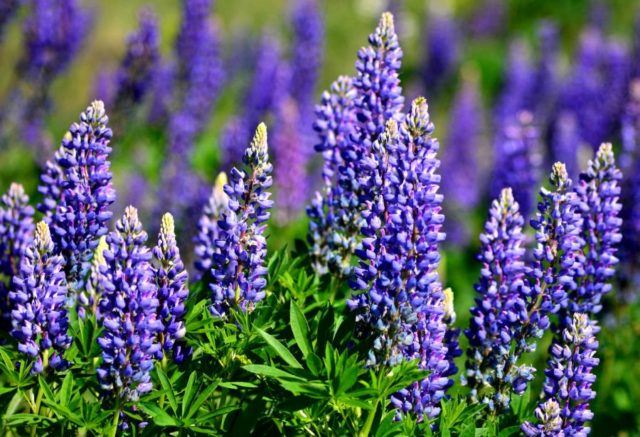
The plant is native to the Mediterranean and North America. Lupine is widespread in the Andes and Cordillera, Arizona, Texas, Mexico, California. You can meet the plant in Peru and Chile, as well as in African desert oases. In Russia, perennial grows in the European part of the country in its natural form and is widely cultivated throughout the territory.
Lupine chemical composition
The benefits and harms of lupine for humans are determined by the chemical composition of the plant. Perennial contains:
- fats and proteins;
- sugars and starch;
- the alkaloids luralin, angustifolin, and lupinine;
- amino acids;
- fiber;
- lupanine and hydroxylupanine;
- zinc and iron;
- vitamin PP;
- carotene;
- asparagine and glutamine;
- flavonoids;
- peptides;
- calcium.
The plant should be eaten with caution due to the high content of alkaloids. For medicinal use, lupine is taken in minimal dosages.
Useful properties of lupine
The lupine plant, when used correctly, has a beneficial effect on the human body. Namely:
- regulates blood sugar and helps with diabetes;
- improves the condition in diseases of the spleen and liver;
- relieves inflammation and pain in joint ailments;
- serves as the prevention of oncology and helps with existing tumors;
- strengthens the cardiovascular system and prevents the development of atherosclerosis;
- promotes recovery from neurological diseases;
- improves appetite and helps with nausea;
- strengthens the immune system and increases resistance to viruses and colds;
- protects the organs of vision and prevents the development of cataracts;
- strengthens nails and promotes hair growth;
- activates blood circulation and improves brain function.
You can use the valuable properties of lupine for abscesses, wounds and ulcers. Plant-based formulations disinfect damage and prevent inflammation, as well as accelerate tissue repair.
Preparation and application methods
Traditional medicine suggests preparing water and alcohol products for medicinal use based on lupine. The green parts of the plant are used as raw materials, as well as its seeds and oil, which can be purchased at the pharmacy.
Tincture
For liver diseases, colds and skin inflammations, a strong tincture of lupine has a good effect. They do it like this:
- 100 g of dried herbs are poured into 1 liter of vodka or dry white wine;
- for two days they are removed under a lid in a dark and warm place;
- filter after expiration.
The resulting tincture of the lupine plant is taken orally for treatment, 5 ml three times a day.
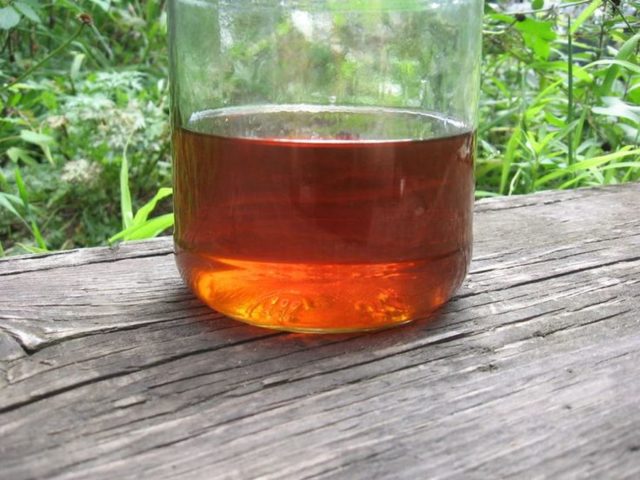
Infusion, decoction
With poor appetite and liver damage, you can prepare an infusion using lupine seeds. They do it like this:
- the beans of the medicinal plant are ground to a state of flour and 10 g are measured;
- mix raw materials with 100 ml of table vinegar;
- add three large spoons of honey;
- 10 g of pepper and rue are added;
- keep the mixture closed for two hours.
A ready-made remedy from a medicinal plant is taken 15 g twice a day.
A water infusion of lupine also has a good effect on digestion. The tool is made according to the following algorithm:
- a large spoonful of plant grains is poured with warm water and left for five hours to swell;
- after a period of time, the liquid is drained;
- steamed seeds with a glass of fresh hot water;
- boil for 15 minutes over low heat.
It is necessary to take a ready-made plant-based product without straining twice a day in a glass.
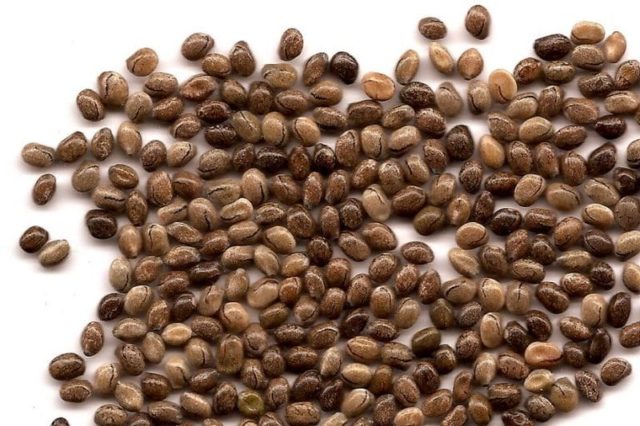
Ointment
For wounds, ulcers and boils, you can use a homemade plant-based ointment. It is prepared according to the following algorithm:
- equal amounts of barley and lupine flour are mixed;
- the powder is poured with boiling water in small volumes to obtain a viscous mass;
- wait for the mixture to cool slightly.
A warm ointment is applied to wounds and abscesses and covered with a bandage on top. It must be prepared anew before each procedure.
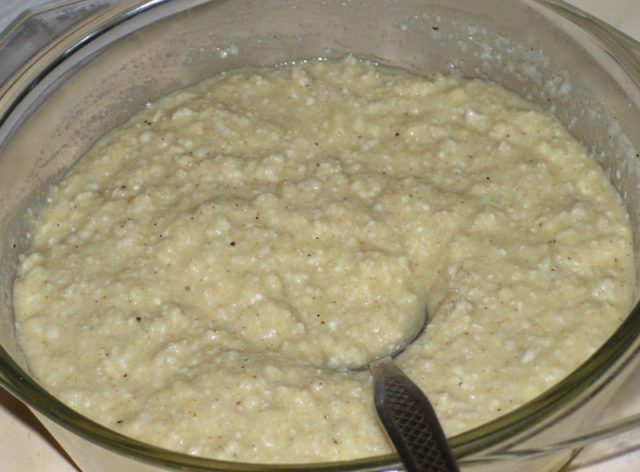
The use of lupine in medicine
Traditional medicine uses the healing properties of lupine for inflammatory ailments, digestive disorders and skin diseases. Herbal remedies work well with regular prescription use.
To strengthen immunity
With weak immunity and a tendency to frequent colds, you can prepare a decoction of plant seeds. They do it like this:
- a handful of lupine grains are soaked for five hours in warm water to soften them;
- pour raw materials 200 m of fresh liquid and boil for several minutes after boiling;
- cool the product to a warm state.
You need to take a decoction of the beans of the plant twice a day, along with the sediment. The drink will not only increase your resistance to colds, but also have a beneficial effect on digestion.
For ulcers and wounds
For neurological inflammations, compresses based on green lupine seeds have a good effect. The medicinal mixture is done as follows:
- a handful of grains are poured with a small amount of water and boiled until softened;
- using a pusher, thoroughly grind the seeds.
The resulting homogeneous mass is applied to the sore spot with an even layer and covered with a bandage.Leave the compress from the beans of the plant for 1-2 hours, and procedures are required every evening until the condition improves.
With inflammation of the sciatic nerve
Compress with plant grains relieves neurological inflammatory diseases. For external use, prepare the following mixture:
- 30 g of lupine seeds are ground into dry flour;
- mixed with three large spoons of honey;
- add 20 g of dry black wolf bast powder;
- pour the components of 100 ml of boiling water.
Stir the product until smooth, wait until it cools slightly, and apply it to the sore spot in the form of lotions and compresses.
For skin rashes
The anti-inflammatory and cleansing properties of lupine are good for problematic epidermis. It is recommended to prepare the following infusion from a useful plant:
- two large tablespoons of dry lupine herb are poured with a glass of boiling water;
- leave under the lid for two hours;
- filter through cheesecloth.
The resulting product is used for washing in the morning and evening for two months. Lupine regulates oily skin and reduces the number of breakouts.
With abscesses
Medicinal lupine has an antiseptic and healing effect for abscesses and abscesses. For treatment, prepare the following ointment:
- dry lupine seeds are ground into powder in a volume of 10 g;
- mixed with 15 g of honey and 30 ml of vinegar 9%;
- bring the product to a homogeneous state.
The finished drug is consumed three times a day, a large spoonful.
For heart ailments
Lupine seed oil has a beneficial effect on blood vessels and helps to strengthen the heart system. Wine tincture is prepared for therapy:
- 40 ml of lupine oil is mixed with 30 g of natural honey;
- pour the ingredients in 100 ml of dry red wine;
- stir well and leave to brew for a couple of hours.
The finished product is taken twice a day, 50 ml, without straining. Since the drug is alcoholic, it is very important to observe the dosage during treatment.
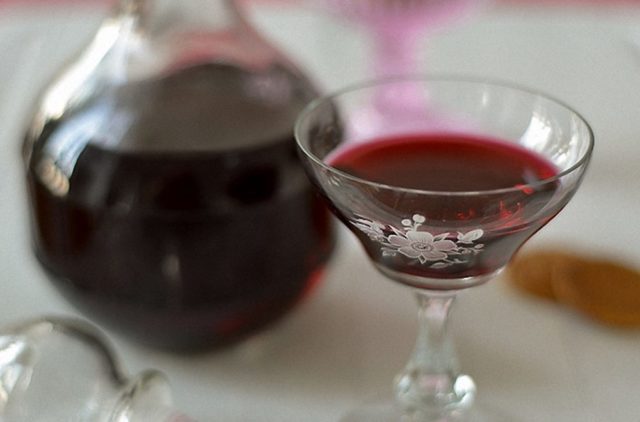
With hair loss
The healing properties of lupine have a good effect on weakened hair that is prone to falling out. To strengthen the curls, the following remedy is prepared:
- 50 g of dried flowers and leaves of the plant are mixed with 30 g of chopped willow bark;
- add two large spoons of dried maidenhair;
- plant raw materials are poured with 1 liter of water;
- bring to a boil and boil over low heat for another ten minutes.
The filtered agent is cooled to warm temperature and filtered. It must be used every time after hygienic procedures to rinse the curls.
With staphylococcal infection
The beneficial properties of lupine are used to get rid of Staphylococcus aureus. Traditional medicine recommends this collection:
- 250 g of dry plant leaves are mixed with an equal amount of burdock;
- add 300 g of yarrow;
- make 150 g of dried nettle, plantain and sweet clover;
- add chamomile and calendula flowers in a volume of 50 g;
- mixed with 100 g of wild rose berries and 50 g of horsetail and dandelion roots;
- measure out 100 g of a multi-part collection;
- pour 1 liter of water.
The product is brought to a boil on the stove and simmered for about eight minutes, and then turned off and filtered. A herbal preparation from several plants is consumed three times a day in a large spoon.
With heavy periods
For painful and excessively heavy periods in women, you can use homemade ointment with lupine flour. They do it like this:
- ground seeds in an amount of 10 g are mixed with 15 g of honey;
- bring the components to a homogeneous state.
The resulting ointment from a medicinal plant is used to treat the lower abdomen and the navel area, and also take the remedy inside three times a day for 5 g.
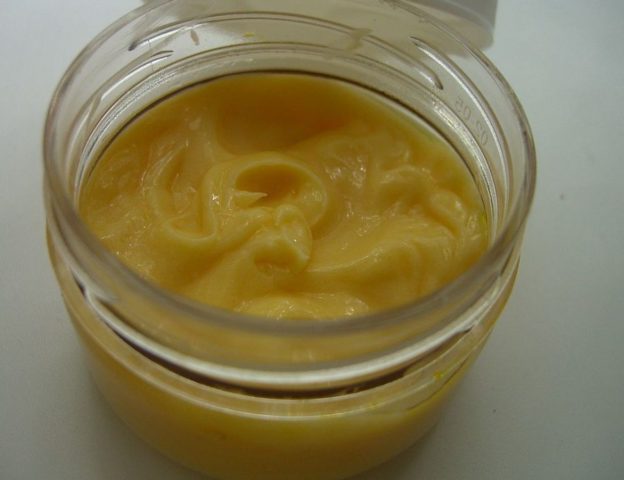
With premature skin aging
The medicinal plant lupine works well on the skin and helps prevent premature aging. To rejuvenate and refresh the epidermis, prepare the following infusion:
- 50 g of lupine seeds are mixed with an equal amount of starch and horse beans;
- add 50 g of melon seeds and chickpeas;
- pour raw materials with 500 ml of hot water;
- leave for six hours under the lid for infusion.
The finished product based on a useful plant is filtered and used for daily washing in the morning and evening. On the background of applying the infusion, the skin quickly acquires elasticity and a healthy color.
Cooking applications
For culinary purposes, they mainly use flour obtained from lupine seeds. With numerous valuable properties, it does not impair the taste of products, does not affect their smell and texture. The plant contains many amino acids and plant fiber, which additionally increases the value of flour prepared on its basis. Baked goods made with lupine seeds are suitable for storage for up to a week.
The plant in Japan and other Asian countries is added to soy sauce and tofu. In Europe, lupine can be found in diet ice cream - the delicacy turns out to be low in calories and at the same time very soft and pleasant in consistency. In the countries of South America, the beans of the plant are used fried. They are as popular as potatoes and corn.
Contraindications to the use of lupine
The effect of lupine on the body is not always positive. The herb contains a large number of toxic alkaloids that can be harmful. It is necessary to refuse to use the plant:
- with individual allergies;
- during pregnancy;
- while breastfeeding;
- with severe diseases of the central nervous system;
- with cirrhosis of the liver.
Lupine-based products are not offered to children and adolescents. During therapy with a medicinal plant, it is necessary to observe small dosages and take breaks in treatment. Too long-term use of the herb leads to damage to the liver and nervous system, and with a single overdose of lupine, nausea, diarrhea and headaches can develop.
Collection and procurement
Any part of the plant has medicinal value. Lupines are harvested throughout the warm season. In early summer, the buds and leaves are harvested, the stems are cut closer to August, and the roots are dug up with the onset of late autumn.
It is necessary to dry lupine grass in the fresh air under a canopy or in a warm room away from sunlight. It is also allowed to use the oven, but you need to heat it up to a maximum of 50 ° C. When the temperature rises, valuable substances are destroyed in the composition of lupine - first of all, vitamin C and organic acids.
Store the dried plant in paper bags, fabric bags or cardboard boxes in a dark cabinet with low humidity. From time to time, it is recommended to stir the workpieces in order to prevent the appearance of mold.
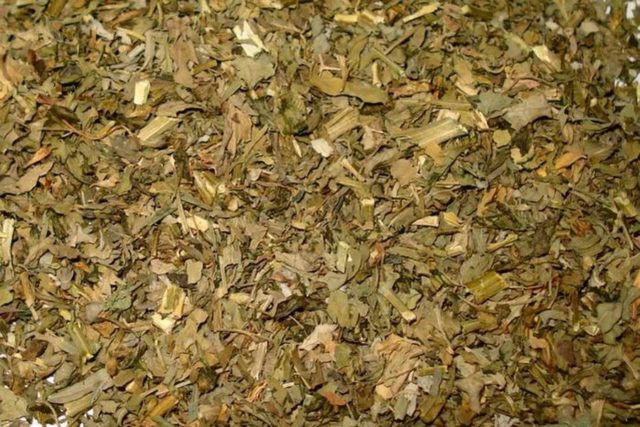
As for the seeds, they are harvested after final ripening - the pods should dry out and acquire a brownish brown color. The beans of the plant for medicinal use are also dried in the fresh air, in a room or in an oven, observing a temperature regime not exceeding 50 ° C. For storage, seeds are harvested in a clean plastic or glass container under an airtight lid.
The magical properties of the lupine flower
Many folk beliefs are associated with a beautiful and useful plant.It is credited with strong magical properties, it is believed that lupine bestows attractiveness and health, maintains confidence and ignites passion. Varieties with white flowers contribute to successful marriage and family happiness.
At the same time, the plant in folk signs also has negative properties. In the Middle Ages, it was believed that lupine juice can turn a person into a werewolf, and also helps to spoil and is used for contact with evil spirits. At the same time, plant beans were used even hundreds of years ago for protective conspiracies, for cleansing from negative energy and for meditation.
Soil benefits of lupine
The lupine plant is a valuable green manure. As it grows, it accumulates a large amount of nutrients and improves the composition of the soil. In particular, the plant surpasses even manure in the content of nitrogen, potassium and phosphorus. It is useful to embed the grass in the soil as fertilizer for other crops to a depth of about 8 cm.
Conclusion
The property of lupins, which allows you to fight inflammation and bacterial processes, makes the culture very valuable for medicinal use. Plant-based ointments, tinctures and decoctions are used internally and externally. In the process of therapy, it must be borne in mind that lupine contains a large amount of alkaloids and requires adherence to dosages.

